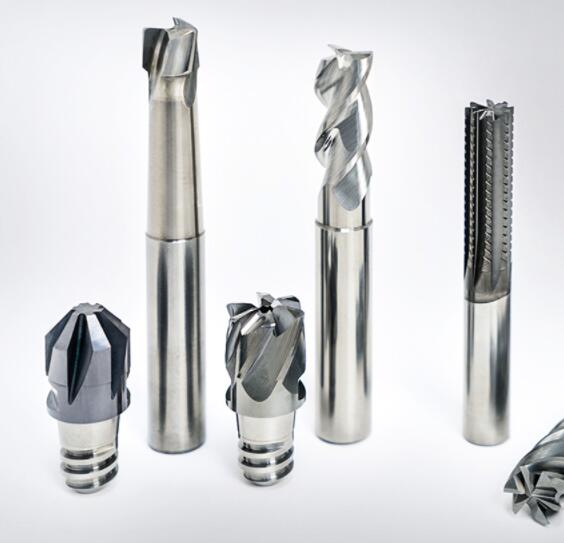In the process of CNC milling, the cutting tool moves perpendicular to its axis, so it can remove excess materials from the workpiece around the tool. To manufacture milling parts of various shapes and sizes, many types of milling cutters are required.

9 Types of Milling Cutters - What Are the Different Types of Cutting Tools in CNC Milling
Different milling cutting tools are made of different materials and have varying structures.
1. End milling cutter
Both sides of the end mill have cutting teeth, this tool can be used very successfully for a variety of drilling operations. The main difference between a drill and an end mill is that the drill can only cut in the axial direction, while the end mill can cut in all directions. The end mill contains one or more chip removal grooves, which are finally used for various milling operations. It is made of high-speed steel or hardened materials. There are usually two variants of this tool. One is commonly known as center cutting, which has cutting edges on both sides of the tool, and the other is noncenter cutting edges, in which the cutting edge is only on one side.
2. Rough milling cutter
These milling cutters provide excellent performance under the most demanding operating conditions. As the name implies, they are used to extract a large number of unnecessary materials from the artifacts. Usually, there are more wavy teeth with this tool. Rough end mills produce very small chips, resulting in a rough surface finish.
3. Peripheral milling cutter
When the cutting teeth on the milling cutter exist at the circumference or periphery of the disc, these types of milling cutters are called peripheral milling cutters or peripheral milling cutters. These milling cutters can only be used in horizontal milling machines.
4. Side milling cutter
A side milling cutter is another type of milling cutter, whose cutting teeth exist not only in the periphery but also in the face or end. The side milling cutter is generally used for strand milling operations and face milling operations. They can also be used to cut grooves and make deep and narrow grooves.
5. Face milling cutter
The face milling cutter consists of a large-diameter cutting body with a plurality of mechanically fixed plug-in inserts. Through the cutting stroke of the face milling cutter, through the deep radial and narrow axial cutting, a lot of unnecessary materials can be removed. The diameter of the face milling cutter body usually depends on the length of the workpiece and the available clearance on both sides of the workpiece. These face milling cutters can also be used for forwarding milling operations. A face milling cutter is a kind of cutting tool with very high rigidity. The surface finishes it provides depend on the feed rate and the number of teeth on the cutter.
6. Concave milling cutter
Concave milling cutter belongs to the category of forming cutter. Forming tools are usually designed to create specific shapes on the workpiece. This milling cutter is a specially manufactured tool designed to correspond to the convex surface of a circular profile. This circular profile is usually equal to or less than a semicircle.
7. Thread milling cutter
A thread milling cutter is used to cut the external thread and internal thread of the workpiece. The cutting process with a thread milling cutter can process a single pitch thread or variable pitch thread from M2 to 1mm nominal diameter.
8. Ball end milling cutter
A ball end milling cutter is also called a ball nose milling cutter. These milling cutters are named because their cutting ends are hemispherical. This type of milling cutter is usually used to reduce stress concentration during operation. It is usually suitable for processing the three-dimensional surface shape of the workpiece.
9. Fly milling cutter
The fly cutter is composed of the main body, in which one or two cutter heads are inserted. As the cutter head rotates, the cutter head will cut narrower or wider. Face milling cutters are more common in various situations, but they are expensive. These flying cutters can also complete the processing of face milling cutters at a very low price, but their cutting efficiency is far lower than that of face milling cutters.